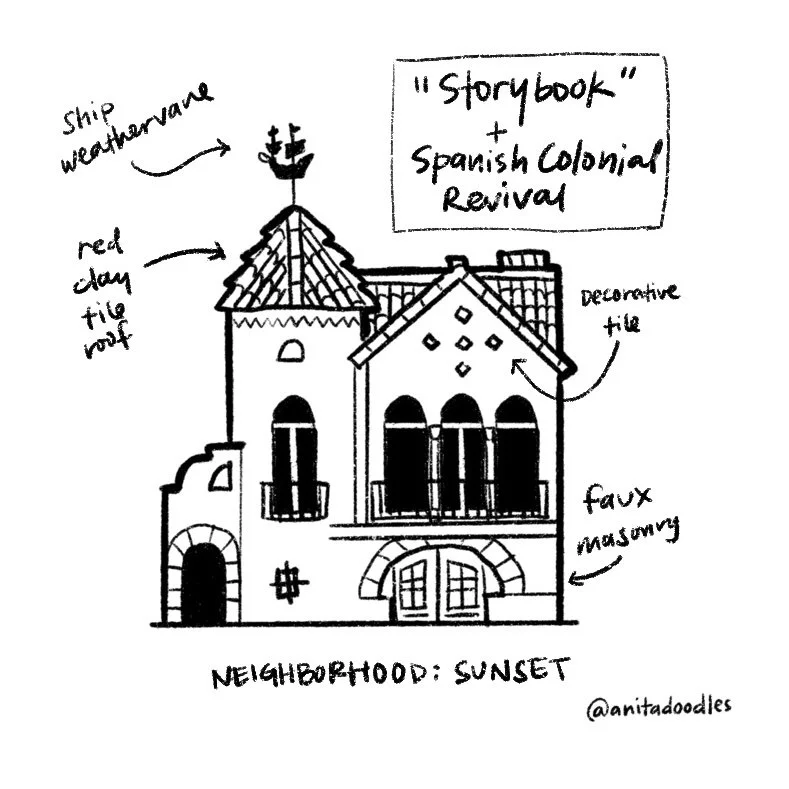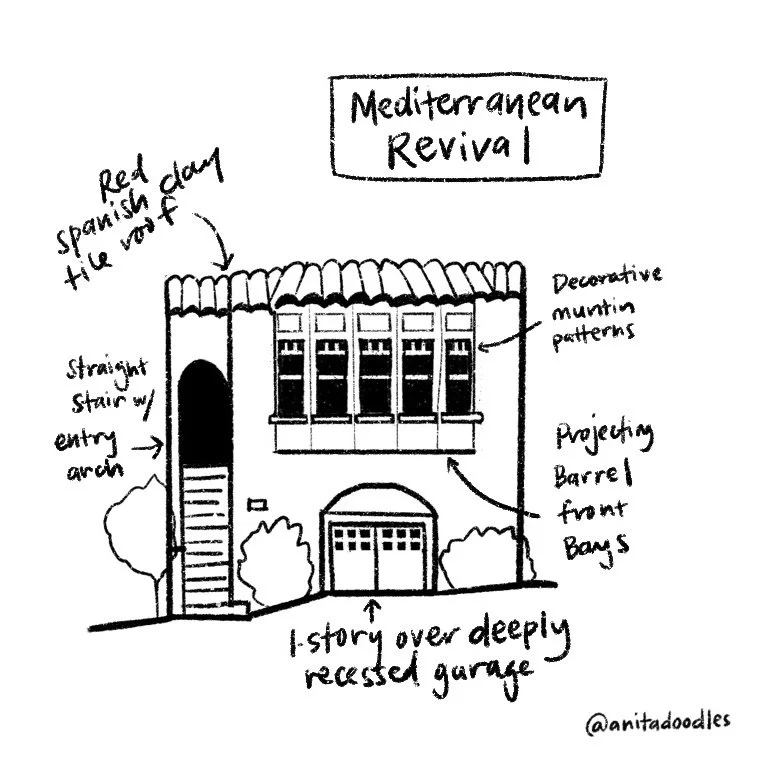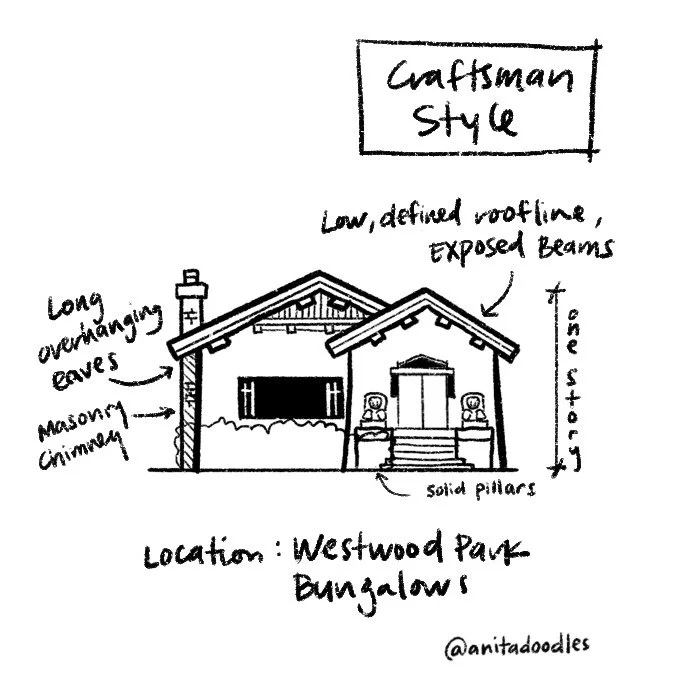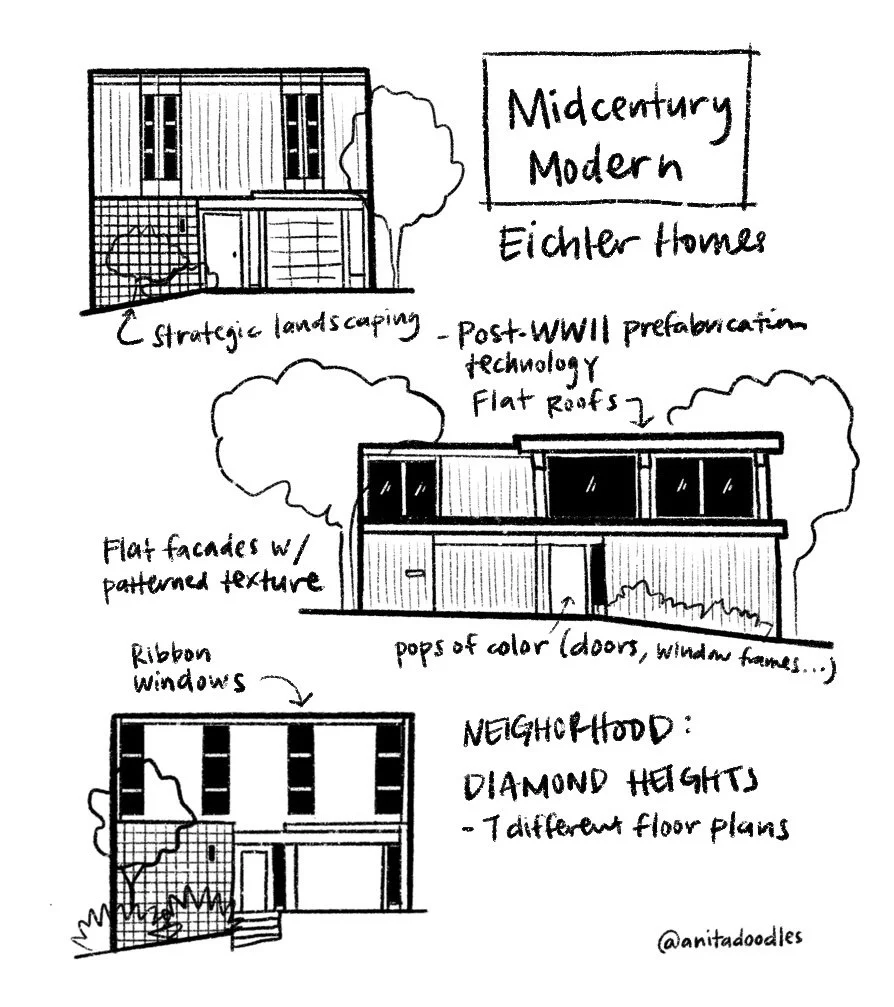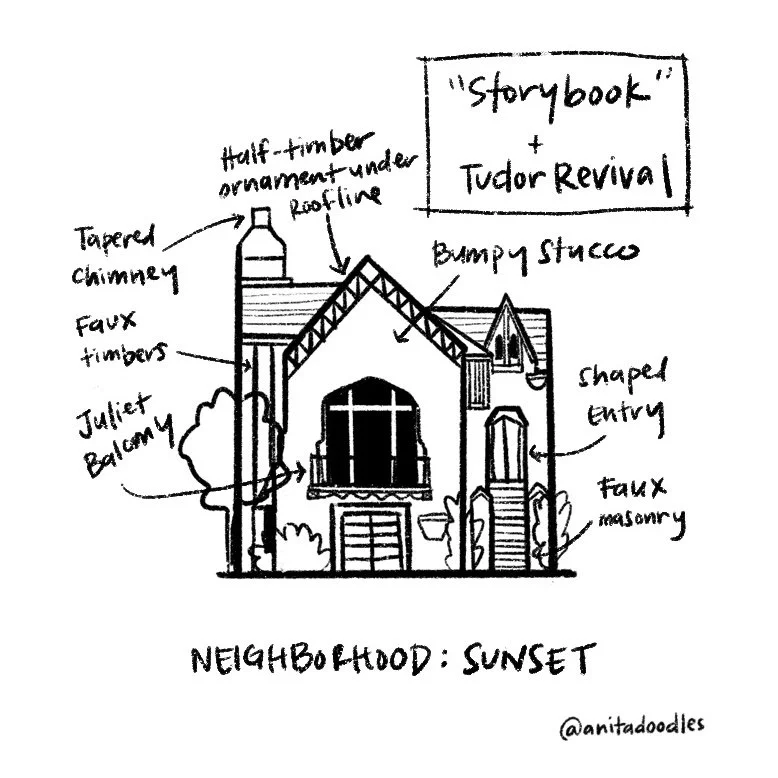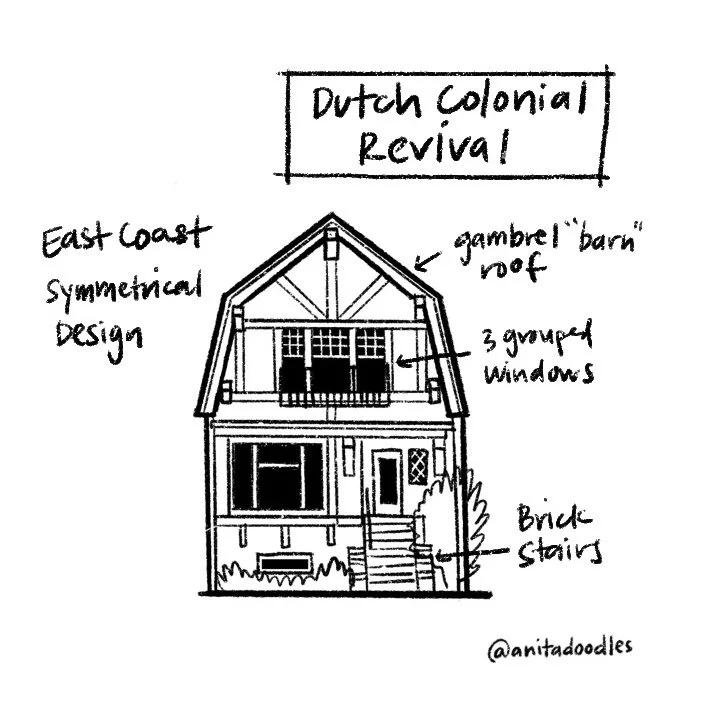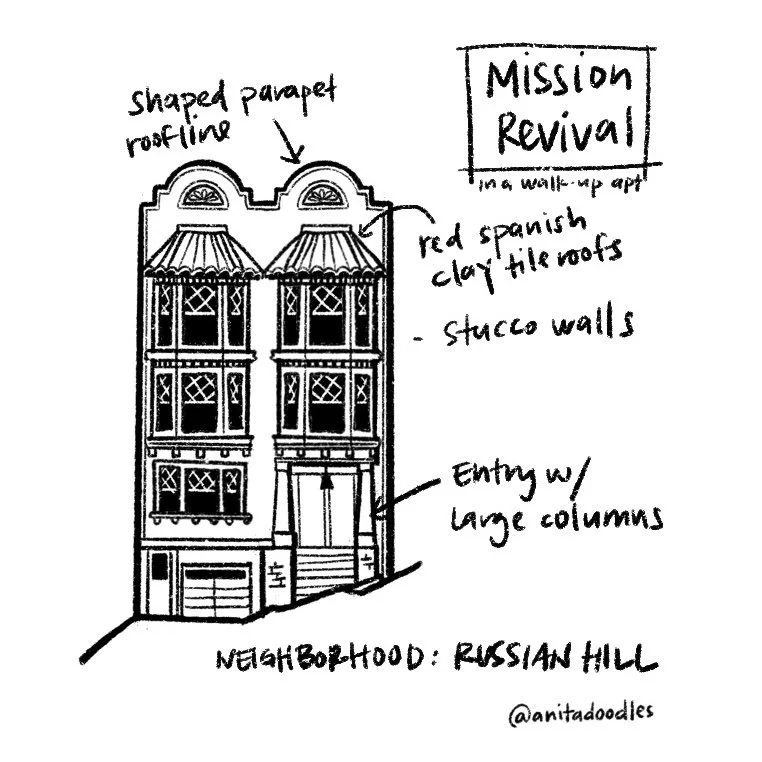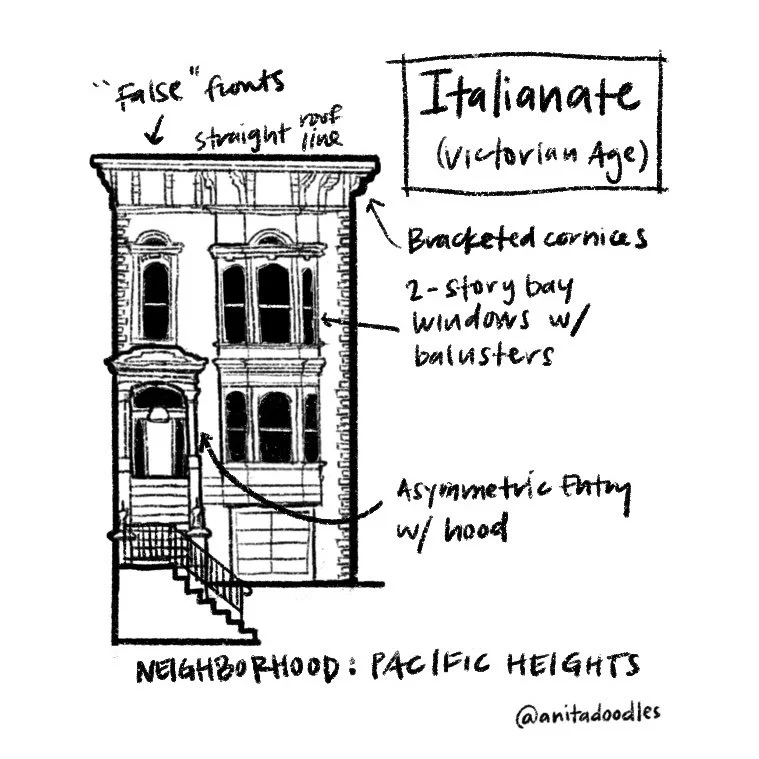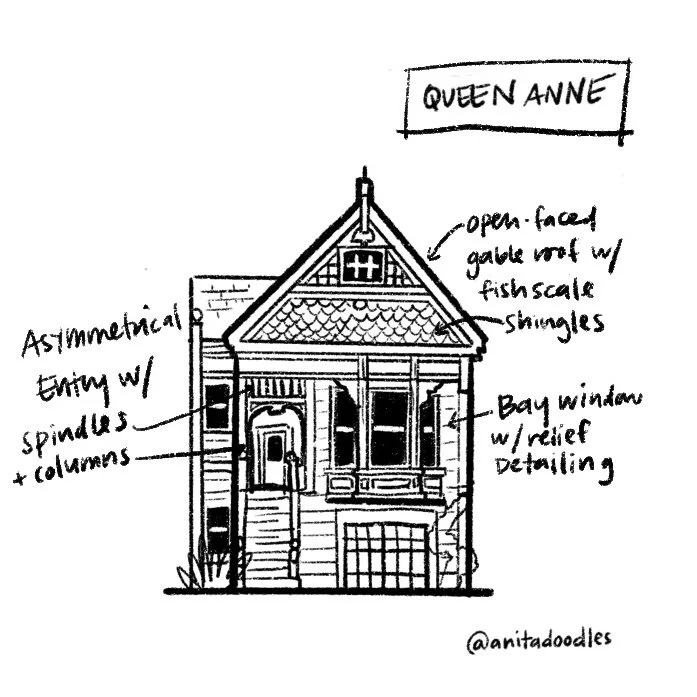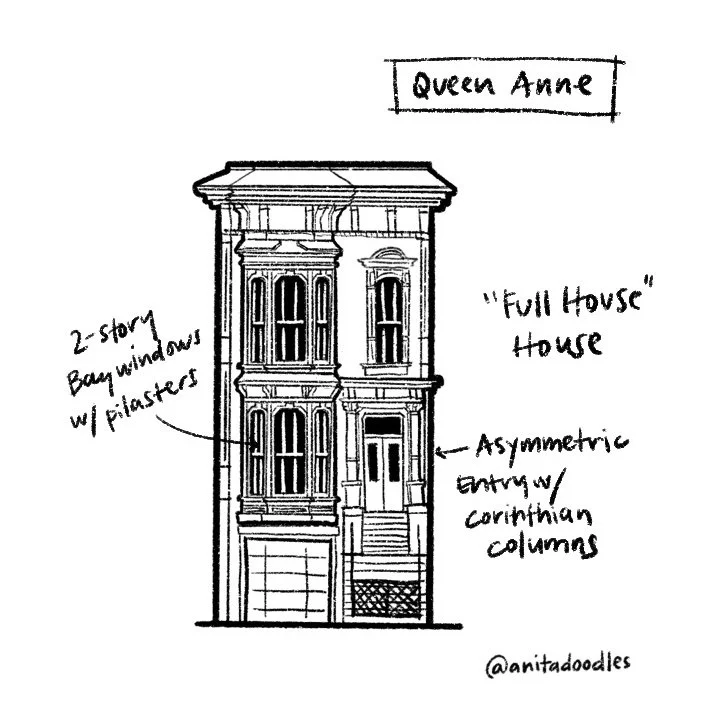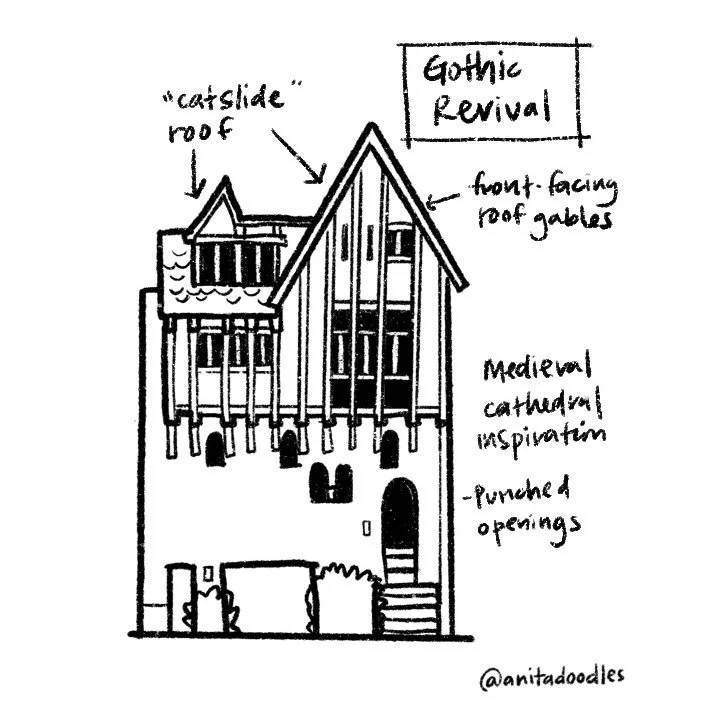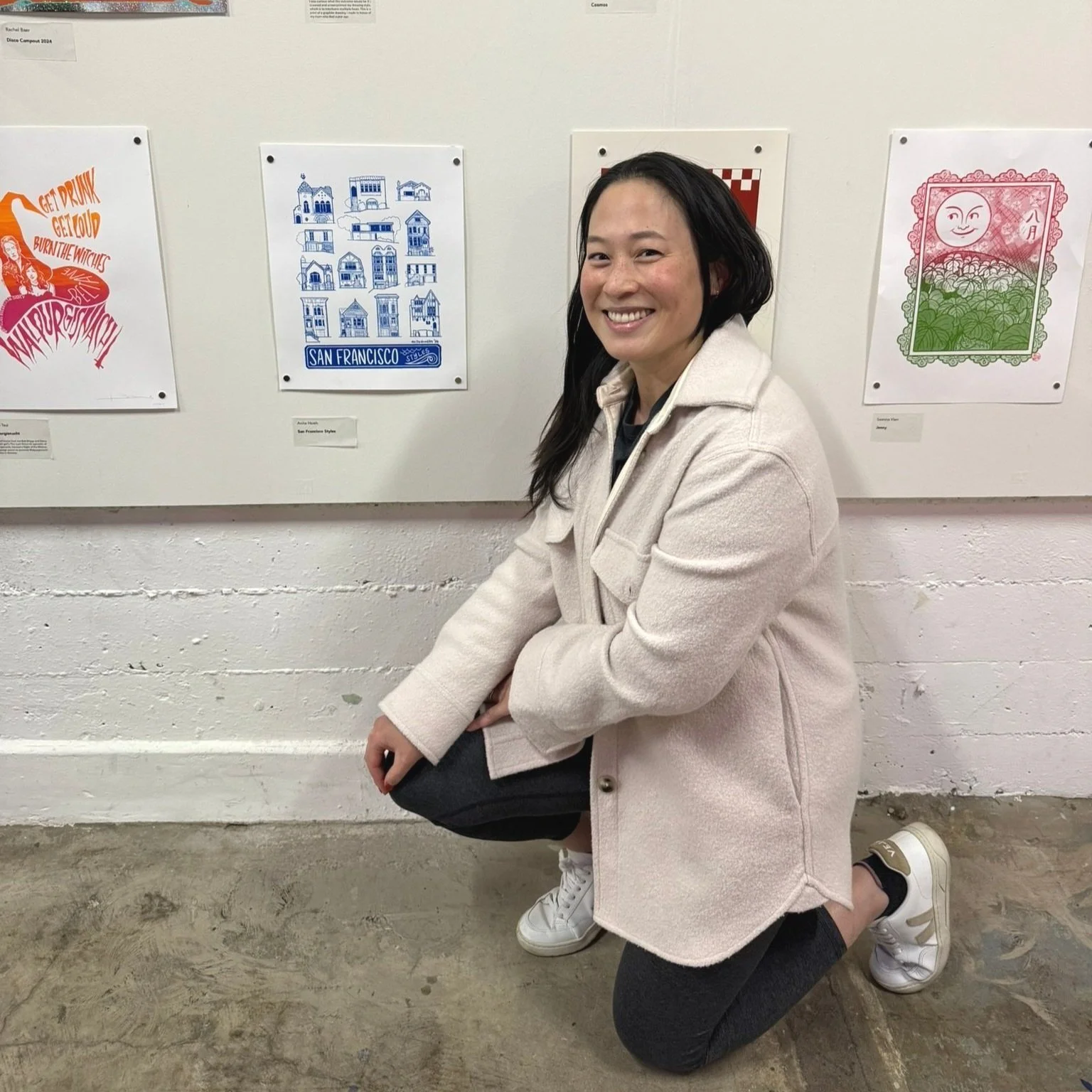SF’s got (architectural) style
It all started with a pet peeve. When people think of San Francisco, they always think of the same iconic things — the Golden Gate Bridge, the cable cars, and the Painted Ladies. The Painted Ladies of Alamo Square are always the main attraction for tourists… but it always boggled my mind how many other cool houses there were, with so much more character and history. The more I walked around, the more photos I took, and the more intrigued I was at all the funky, quirky, colorful buildings. I started taking photos, and then sketching thumbnail photos of the building elevations, and tried to do research on the architectural style. Here is the first series on SF homes that I documented:
Rousseau Storybook Style
Probably some of the most unique-to-SF homes. This style was created by brothers Arthur & Oliver Rousseau, and the original homes are in the Sunset district. The designs are inspired by rural European cottages, and have whimsical and medieval touches.
This home is part of the famous “Rousseau Boulevard Tract”, and is an example of “Storybook” and Spanish Colonial Revival.
Mediterranean Revival
Another truly SF style. What started in the Marina District is now all over the city (this one is found in the Excelsior District). Iconic elements are the red spanish clay tile on the roofs and parapets, stucco facade, projecting barrel bay windows, and garage below.
Craftsman Style
Though there are more stately Craftsman bungalows in the East Bay and SoCal, there is also a great collection of them in the southern part of the city, called the Westwood Park Bungalows. This home is a smaller home, but has classic elements, such as the long overhanging eaves, exposed beams, tapered walls, and masonry chimney.
Midcentury Modern
Tucked away in the hills of Diamond Heights lies an architect’s oasis — streets lined with homes design by Joseph Eichler.
Queen Anne Style
The most ornate variety of Victorian style was Queen Anne. Indicative elements are bay windows, decorative rooflines, floral motifs, gold detailing, etc. This house is cool because not only is it a beautiful Victorian, it is also known as the Grateful Dead House, who lived there between 1966-1968.
Storybook Tudor Revival
Here’s another good example of Rousseau Storybook with Tudor influences, such as steep rooflines, timber ornament, and faux masonry decoration at stucco.
Dutch Colonial Revival
My first thought about this style is… it is so RANDOM! This style lends itself to the early Dutch settlers of the east coast in the 1600 to 1800s. Key features: gambrel (barn-style) roof, timber ornament, symmetrical design.
Mission Revival
This is a good example of how classic styles are hybridized to fit modernized building type such as a walk-up apartment building. Key features: shaped parapet roofline, red Spanish clay tile roofs, and stucco exterior.
Italianate Style
Italianate is early Victorian Era. Key features are the “false fronts” similar to stage sets of western movie sets. This Italianate home has bay windows, which came later in the era when building techniques advanced. This home used to be the Madame C. J. Walker Home for Girls and Women from 1921-1972, which provided community and social services to single African American women new to San Francisco.
2066 Pine Street (SF Designated Landmark)
Queen Anne Style
While some Queen Anne homes are tall and over the top, some can also be smaller in stature and still have impressive details.
Queen Anne Style
Isn’t it ironic that the Full House intro shows the Painted Ladies, but the home where they filmed the exterior is in a different neighborhood? This home is a good example of a less dressed-up Queen Anne (compared to the Grateful Dead House).
1709 Broderick
Gothic Revival
Not as common of an SF home style, but still very interesting and quirky nonetheless. This home has the steeply sloped roofs, arched and punched openings, asymmetrical massing, and shingled roofs.
Posing with my work at the student art show at Haight Street Art Center!

